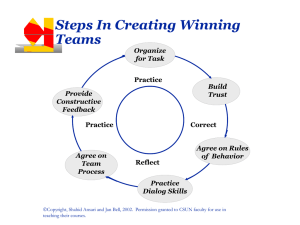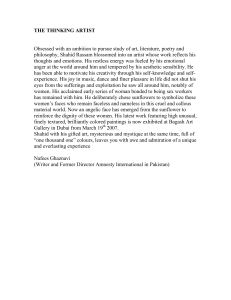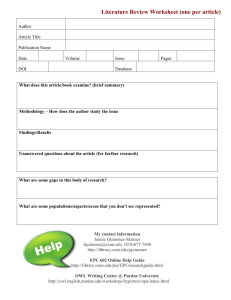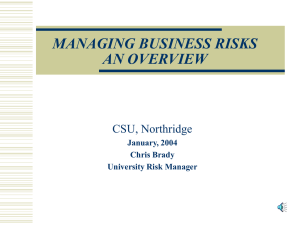Building Effective Teams (ppt)
advertisement
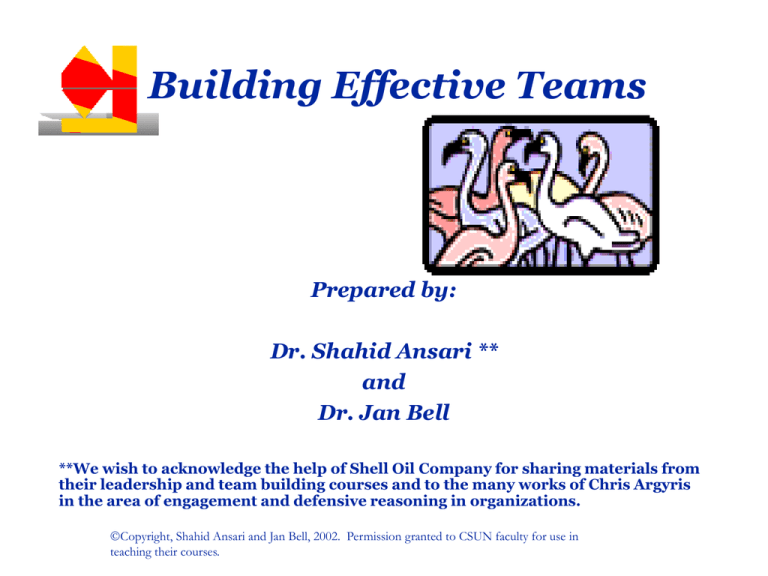
Building Effective Teams Prepared by: Dr. Shahid Ansari ** and Dr. Jan Bell **We wish to acknowledge the help of Shell Oil Company for sharing materials from their leadership and team building courses and to the many works of Chris Argyris in the area of engagement and defensive reasoning in organizations. Copyright, Shahid Ansari and Jan Bell, 2002. Permission granted to CSUN faculty for use in teaching their courses. Steps In Creating Winning Teams Organize for Task Practice Provide Constructive Feedback Practice Agree on Team Process Build Trust Correct Reflect Agree on Rules of Behavior Practice Dialog Skills Copyright, Shahid Ansari and Jan Bell, 2002. Permission granted to CSUN faculty for use in teaching their courses. Build Trust Objective: – Make personal connection to other team members – Understand how personal experiences shape individual responses and behaviors – Appreciate the diversity in personality and decision styles – Learn about the personal goals and values that others bring to the team – Identify areas that will cause conflicts in team Tools – – – – – Icebreakers Team Building Exercises Share formative experiences Share goals Share values Copyright, Shahid Ansari and Jan Bell, 2002. Permission granted to CSUN faculty for use in teaching their courses. Agree on Rules of Behavior Sources of conflict and how do we resolve them – Work Preferences – Communication Preferences – Scheduling difficulties Other norms of behavior – Punctuality (How do we handle being late?) – Attendance (What happens when people miss meetings?) – Problem solving (How do we do this?) – Voting Consensus Majority Two stage – Communication How (Phone, email . . .) When (Mornings, evenings . . .) Copyright, Shahid Ansari and Jan Bell, 2002. Permission granted to CSUN faculty for use in teaching their courses. Practice Dialog Skills Employ a positive tone – Listen and don't interrupt – Be open-minded and respect each other's opinions – Challenge ideas not people – Make certain that all team members have a chance to be heard Inquire before you advocate – Understand what the other person is saying before arguing your position – Check for understanding (repeat other person’s position) before responding Recognize defensive reasoning – People hold assumptions that are not justified by data but they think are valid – People reach conclusions that do not follow from their assumptions or data – People draw conclusions that they have not tested – People behave in a manner that contradicts what they espouse – People read a situation based on their feelings rather than on data Find a way to air “undiscussables” positively – Encourage people to share doubts and misgivings publicly – Recognize when people are being polite when they are uncomfortable with a decision Copyright, Shahid Ansari and Jan Bell, 2002. Permission granted to CSUN faculty for use in teaching their courses. Agree on Team Process Start Meeting with a “Check in” – Allows people to share state of mind they are bringing to the meeting Agree on Goals – Assign time to each goal – Make sure that time reflects group’s priority – If out of time, capture goals on a “parking lot” Assign Roles – Facilitator – person who will run the meeting and enforce rules – Note-taker – person who will take notes and distribute to team – Time keeper – person who call time Set Rules – Is this a divergent conversation? (exploratory and open) – Is this a convergent conversation? (decisions to be made) – Will we go around and have everyone take turns? – Will we have someone report out and others question? End Meetings with a “Check out” – Did we accomplish our goals? Are their undiscussables that need airing? – What went well? What did not go well? Copyright, Shahid Ansari and Jan Bell, 2002. Permission granted to CSUN faculty for use in teaching their courses. Organize for Task Determine tasks – Read and understand assignment? – Collect data? – Do additional research on . . . ? – Perform data analysis? – Write up assignment? – Edit final product for quality? Define the output of each task – Written summary of facts – Draft of straw solution – Spreadsheet output for numerical analysis – Final written answer in word processing file Assign task responsibility – (individual or all team members) Create “To Do” list – Task Person Output Due Date Status Review and Update “To Do” list at each meeting Copyright, Shahid Ansari and Jan Bell, 2002. Permission granted to CSUN faculty for use in teaching their courses. Provide Constructive Feedback and Advice (Four Types) Constructive Feedback – Balance strengths and weaknesses – Tell them what they do that you like – Recognize accomplishment and praise successes Advice – Tell them what they are doing to hurt the team – Cite specific data (Example: team rule (behavioral or interpersonal) violated – Be interested, helpful and use a positive tone Destructive – Points out how the person’s actions are wrong – Finds fault, nit picks and is never satisfied – Uses a negative tone of voice Punishment – Designed to hurt the person and put them down – Destroy their self-confidence Copyright, Shahid Ansari and Jan Bell, 2002. Permission granted to CSUN faculty for use in teaching their courses.
